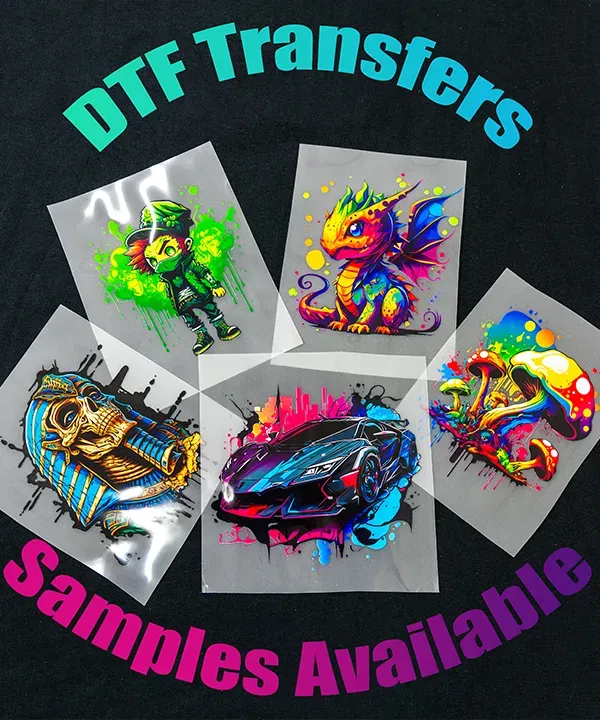In the dynamic world of custom apparel production, DTF transfers, or Direct-to-Film transfers, are revolutionizing how businesses approach printing. This innovative technique allows for vivid designs to be printed directly on a special film, which is then transferred onto fabric with remarkable precision. Not only does this method ensure exceptional color vibrancy and detail, but it also promotes profit maximization through its versatile application across various materials. With the growing trend towards sustainable inks, businesses can cater to eco-conscious consumers while enhancing their product offerings. Embracing DTF transfers provides an opportunity for growth, creativity, and a solid foundation in the competitive printing market.
Often referred to as film transfer printing, the process involves applying intricate designs onto fabrics using advanced machinery and specialized inks. This method has gained immense popularity among small-scale custom printing businesses looking to elevate their product lines and meet specific consumer demands. Whether it’s for personalized items or mass-produced merchandise, utilizing film transfers offers a viable solution for high-quality apparel decoration. By leveraging advanced printing technologies, companies can not only meet market expectations but also engage in sustainable practices that resonate with today’s environmentally-aware customers. As the market evolves, exploring film-based transfer methods could prove integral to staying ahead in the apparel industry.
Introduction to DTF Transfers and Their Profit Potential
Direct-to-Film (DTF) transfers are revolutionizing the custom apparel industry. This innovative printing method allows for vibrant, intricate designs that can be easily transferred onto a variety of textiles. Its growing popularity is largely attributed to its versatility and the high quality of finished products, which appeal to both businesses and consumers. With DTF transfers, companies can produce items that stand out in a saturated market, making it an exciting avenue for profit maximization.
Moreover, the efficiency and durability of DTF transfers provide businesses with an opportunity to cater to niche markets, such as personalized apparel for events and promotions. By leveraging this unique printing technique, companies can not only meet heightened consumer demands for customization but also streamline their production processes, thereby enhancing their profit margins.
Frequently Asked Questions
What are DTF transfers and how do they work?
DTF transfers, or Direct-to-Film transfers, involve printing designs onto a special film which is then transferred to various textiles using heat. This printing method ensures vibrant colors and intricate details while remaining durable and machine washable, making it ideal for custom apparel.
Why is it important to invest in quality printing equipment for DTF transfers?
Investing in high-quality printing equipment for DTF transfers, such as reliable printers from the Epson series, is crucial as it directly affects print accuracy and reduces material waste. This investment leads to increased production efficiency and higher customer satisfaction through quality products.
How do sustainable inks enhance DTF transfer products?
Utilizing sustainable inks for DTF transfers not only enhances the vibrancy and durability of the prints but also appeals to environmentally conscious consumers. Eco-friendly inks are formulated to adhere well to fabrics, boosting your product’s marketability in a competitive landscape.
What niches can benefit from DTF transfers in custom apparel?
DTF transfers are highly versatile, making them ideal for niches such as sports teams, corporate merchandise, and local events. Targeting these specific markets can help businesses tap into growing customer demands for personalized and unique apparel.
What strategies can businesses adopt to maximize profits with DTF transfers?
To maximize profits with DTF transfers, businesses should establish an efficient workflow, invest in quality equipment, implement competitive pricing strategies, and focus on targeted marketing. These approaches can significantly enhance production efficiency and boost sales.
How can quality control impact the success of DTF transfer products?
Quality control is vital in DTF transfers as it prevents product returns and enhances customer satisfaction. Regular testing of prints on different fabrics ensures high-quality standards, improving the shop’s reputation and ultimately leading to increased sales.
| Key Aspect | Description |
|---|---|
| DTF Transfers Definition | DTF transfers use a specialized printing process to create intricate designs on film, which are then heat-transferred onto textiles, providing vibrant colors and durability. |
| Equipment Quality | Investing in reliable printers (e.g., Epson) ensures high-quality prints, reducing errors and increasing customer satisfaction. |
| Ink Selection | Using DTF compatible inks is crucial for durability and washability; eco-friendly inks can appeal to environmentally conscious consumers. |
| Market Trends | The demand for small-batch and customized DTF products is rising, making it essential for businesses to understand their target market. |
| Targeted Marketing | Focusing marketing efforts on specific niches, like sports or corporate merchandise, can enhance sales and build loyalty. |
| Production Efficiency | Streamlining workflow through automation and organization can significantly reduce costs and improve customer turnaround. |
| Quality Control | Implementing quality control measures ensures high standards and reduces complaints, improving the shop’s reputation. |
| Pricing Strategies | Adopting competitive pricing and offering discounts for bulk orders can attract customers and enhance profit margins. |
Summary
DTF transfers represent a thrilling opportunity for businesses aiming to optimize their profit margins in the custom printing industry. By understanding the essentials of DTF transfers—ranging from effective equipment selection to strategic marketing approaches—businesses can not only enhance product quality but also respond adeptly to market demands. The impactful practices highlighted will aid printers in establishing a reliable production workflow, prioritizing customer satisfaction, and ultimately maximizing profits in the vibrant sphere of DTF printing. Embrace these strategies, and your business will be poised to thrive.




